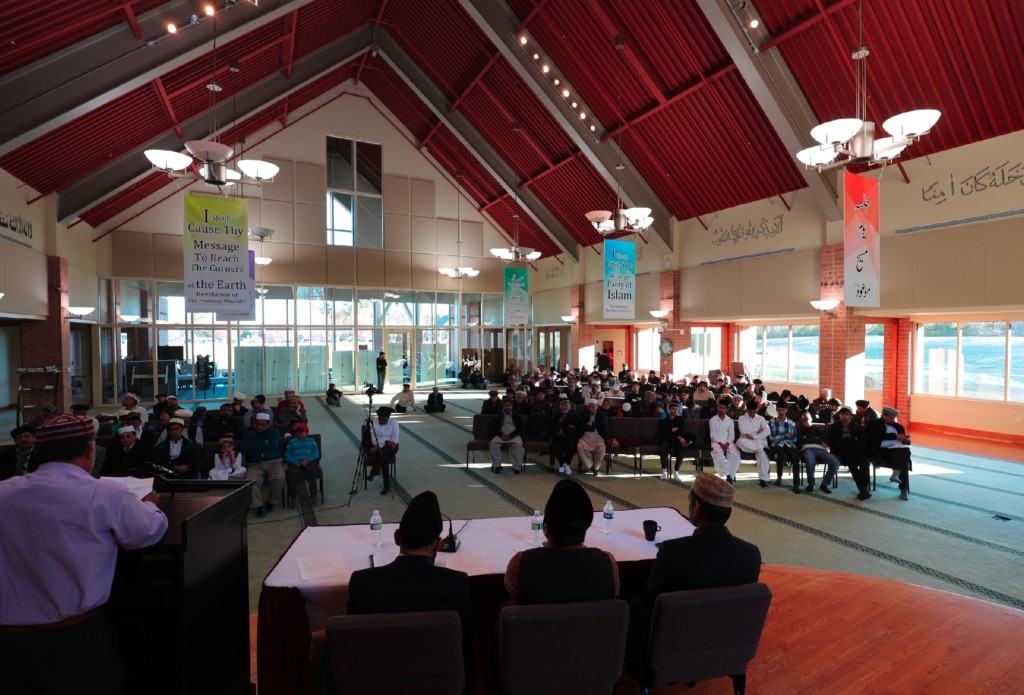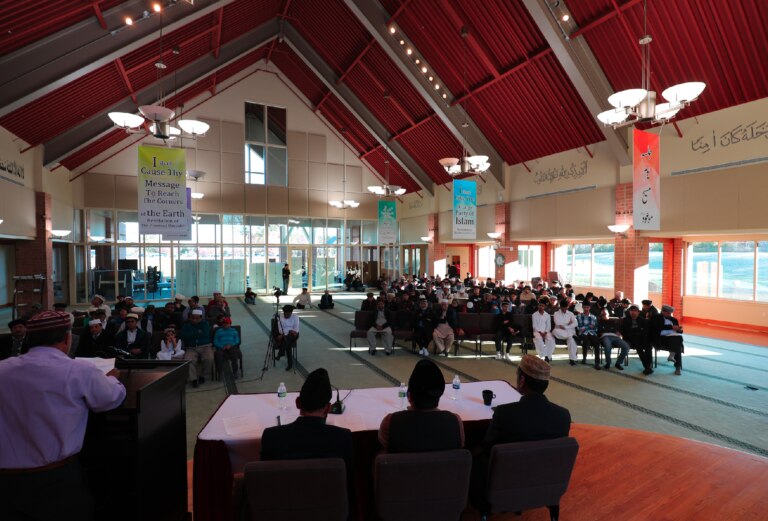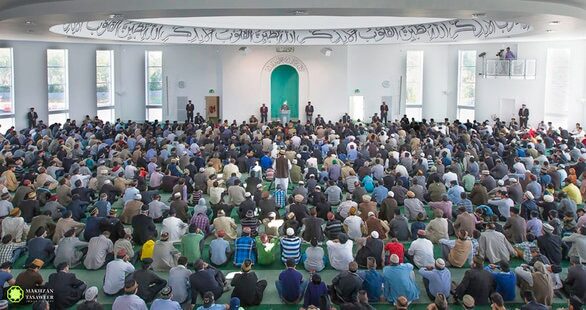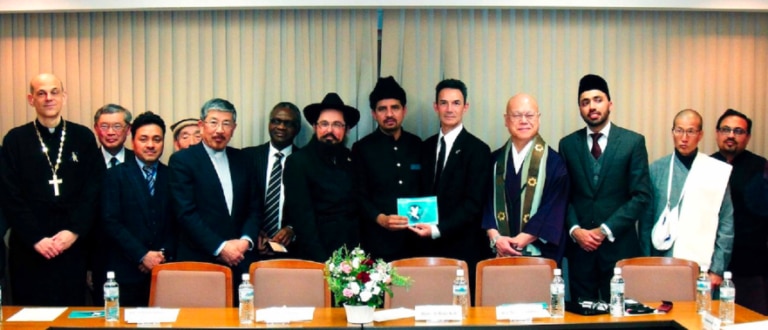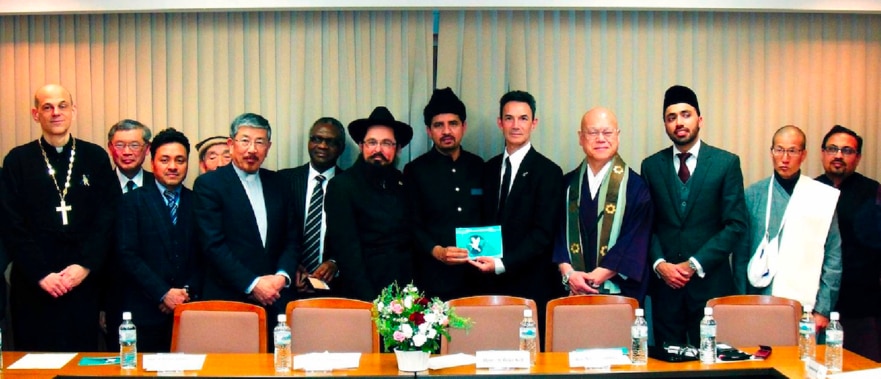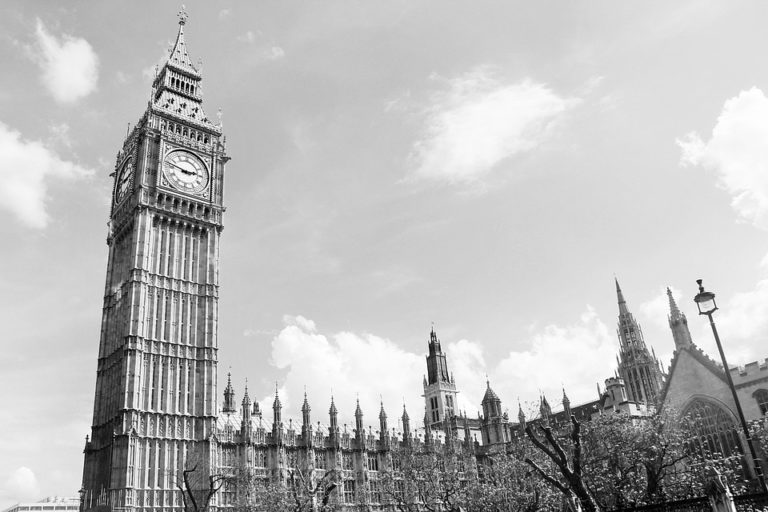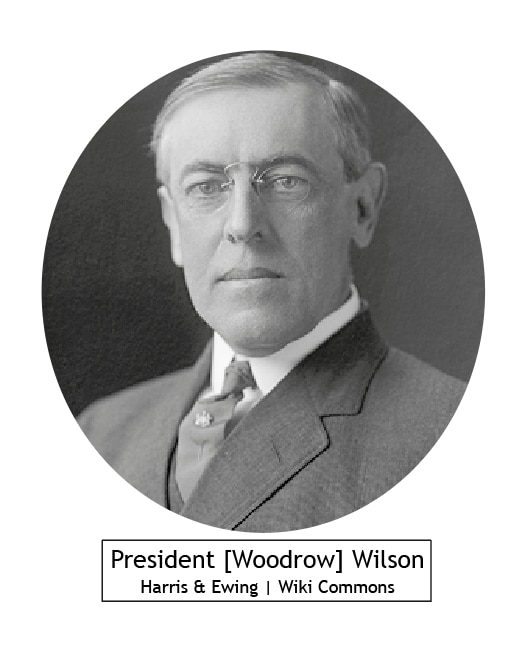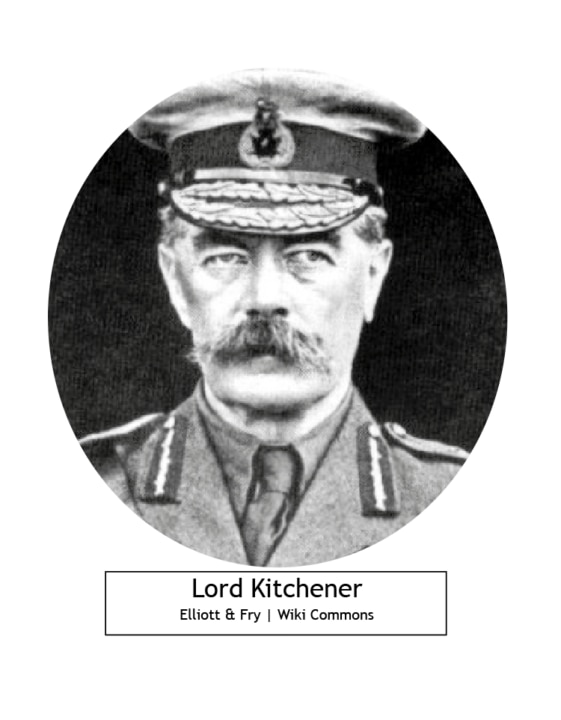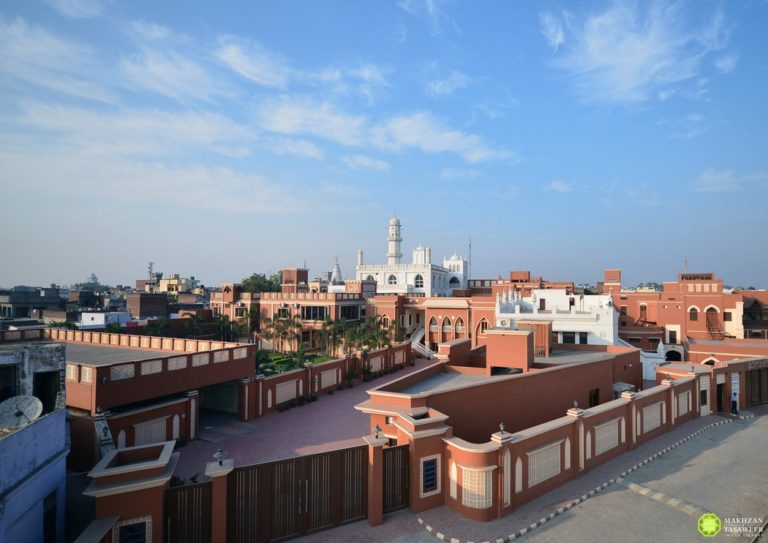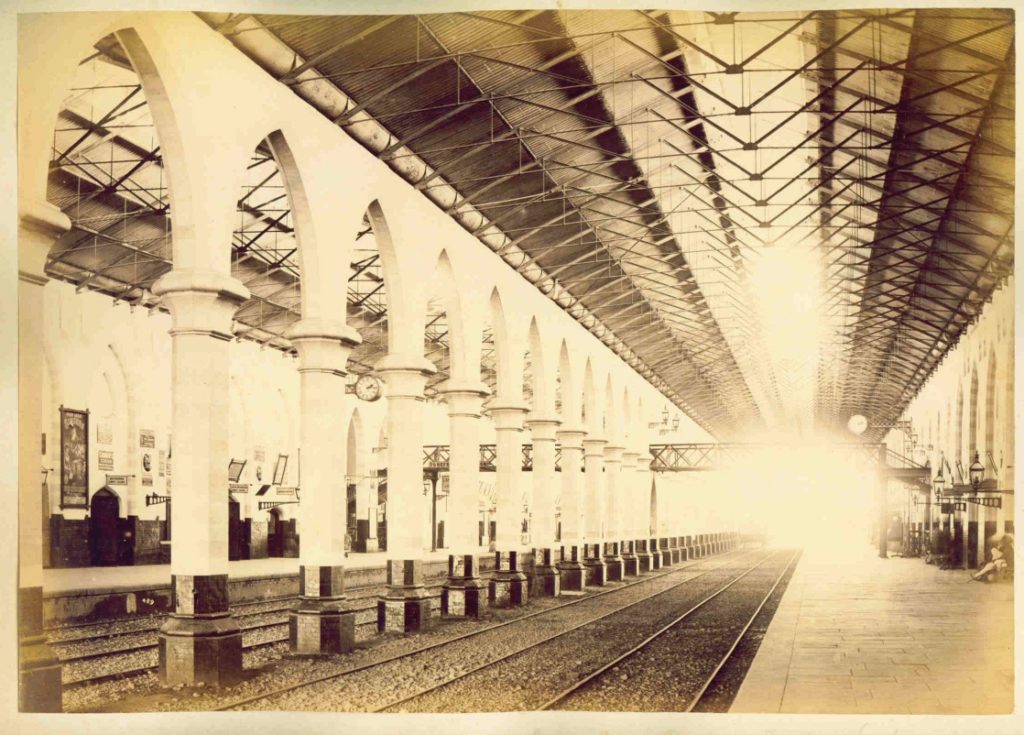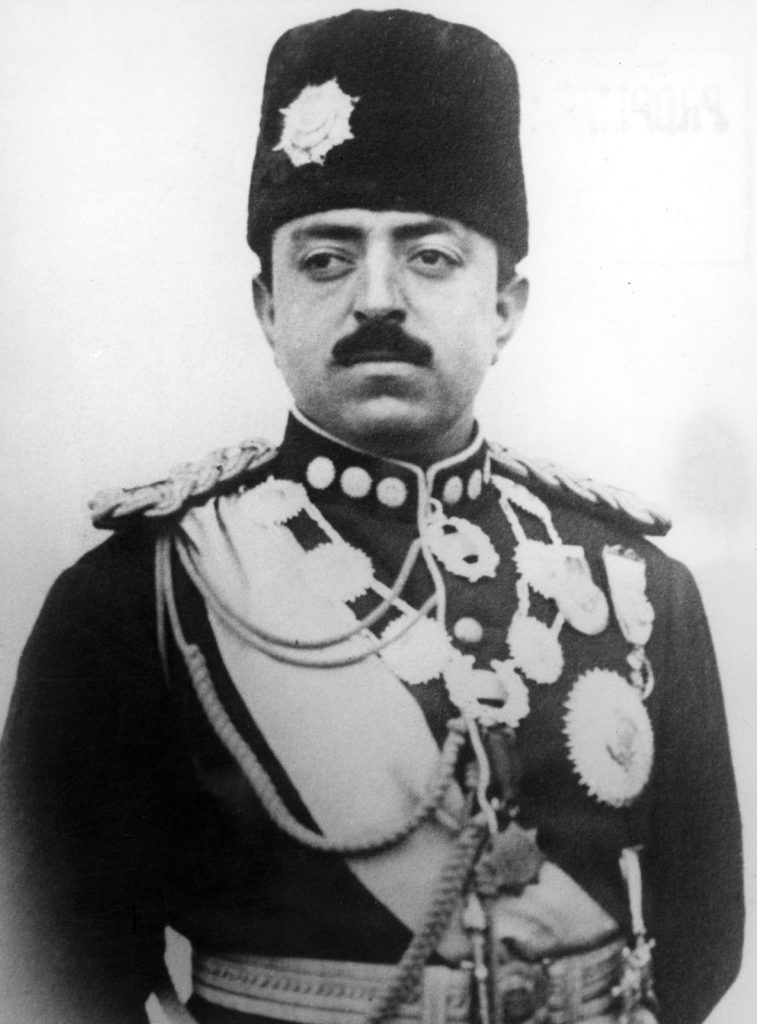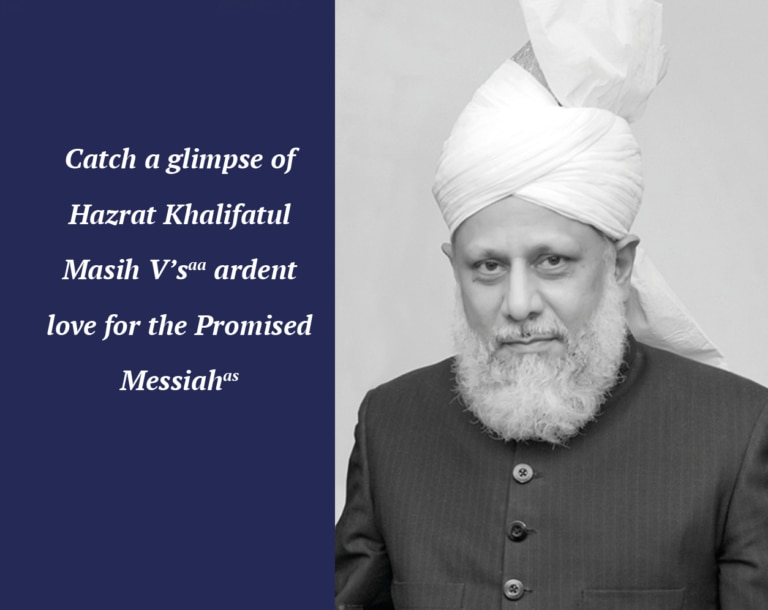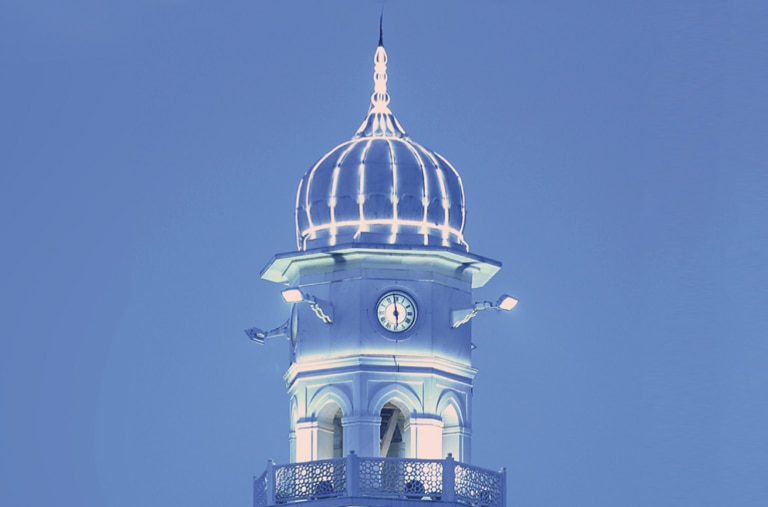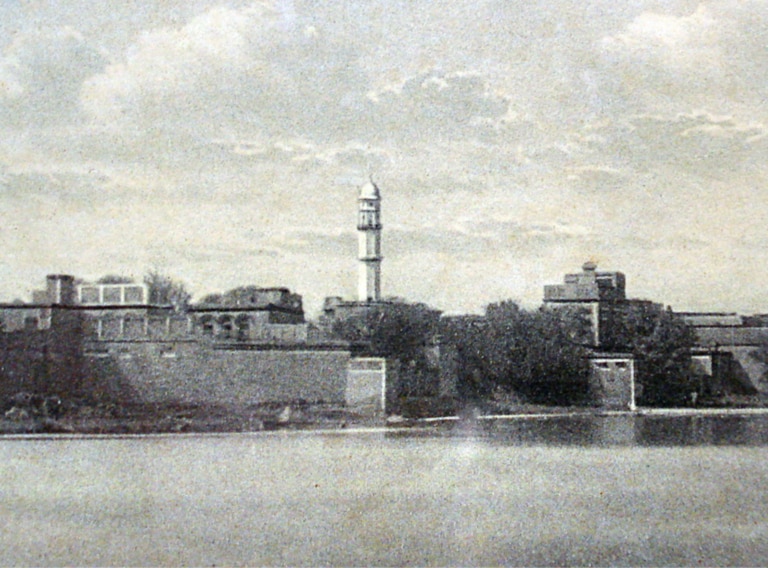Friday Sermon
1 March 2019
Men of Excellence
After reciting the Tashahud, Ta‘awuz, and Surah al-Fatihah, Hazrat Khalifatul Masih Vaa stated:
Today I will continue with the accounts
of the Companionsra who took part in the Battle of Badr.
The first companion is Hazrat Khaulira
bin Abi Khauli. Hazrat Khaulira participated in all of the battles
alongside the Holy Prophetsa, including the battles of Badr and
Uhud. Abu Ma‘shar and Muhammad bin Umar state that Hazrat Khaulira
participated in the Battle of Badr along with his son. However, the name of the
son has not been recorded. Another historian, Muhammad bin Ishaq states that
Hazrat Khaulira participated in the Battle of Badr along with his
brother, Malikra bin Abi Khauli. According to another narration,
Hazrat Khauli’sra two brothers, Hazrat Hilalra bin Abi
Khauli and Hazrat Abdullahra bin Abi Khauli also participated in the
Battle of Badr. Hazrat Khaulira passed away during the caliphate of
Hazrat Umarra. (Al-Tabqaat-ul-Kubra li ibn Sa‘d, Vol. 3,
p. 299, Khauli bin Abi Khauli, Dar-ul-Kutb al-Ilimiyya, Beirut, 1990).
The second companion is Hazrat Rafeyra
bin al-Mu‘alla. Hazrat Rafeyra bin Mu‘alla belonged to the Banu
Habib branch of the Khazraj tribe. His mother’s name was Idaam bint Auf. The
Holy Prophetsa established a bond of brotherhood between Hazrat
Rafeyra and Hazrat Safwanra bin Baidhaa. Both of these
companions participated in the Battle of Badr. According to some narrations,
both of them were martyred during the Battle of Badr, whereas according to a
different narration, Hazrat Safwanra bin Baidhaa was not martyred
during the Battle of Badr. Musa bin Uqba narrates that both Hazrat Rafeyra
as well as his brother Hazrat Hilalra bin Mu’alla participated in
the Battle of Badr. Hazrat Rafeyra was martyred by Ikrama bin Abu
Jahl during the Battle of Badr. (Al-Tabqaat-ul-Kubra li ibn Sa‘d, Vol. 3, p.
450, Rafey bin al-Mu’alla Dar-ul-Kutb al-Ilimiyya, Beirut, 1990)
(Al-Isti’ab, Vol. 2, p. 484-485, Rafey bin al-Mu’alla, Dar-ul-Jeel,
Beirut, 1992.
The next companion is Hazrat
Zus-Shimalain Humairra bin Abdi Amr. His real name was Umair and his
title was Abu Muhammad. Ibn Hisham states that he was commonly referred to as
Zus-Shimalain, but this was not his actual name. This was a title given to him
because he used to utilise his left hand more. According to another narration,
he was able to utilise both of his hands equally. Hence, he was also referred
to as Zul-Yadain. He belonged to the tribe of Banu Quza‘ah and he was a
confederate of Banu Zuhrah. When Hazrat Umairra migrated to Medina
from Mecca, he stayed at Hazrat Sa‘dra bin Khaisama’s house.
The Holy Prophetsa
established a bond of brotherhood between him and Yazidra bin Haris.
Both of these companions were martyred during the Battle of Badr. Hazrat Umairra
was martyred during this battle by Usama Joshami. He was 30 years of age at the
time of his martyrdom. In Tabaqat al-Kubra, the name of the assailant
who killed him is recorded as Abu Usama Joshami instead of Usama Joshami.
(Al-Tabqaat-ul-Kubra li ibn Sa‘d, Vol. 3, p. 124-125, Zul Yadain,
Dar-ul-Kutb al-Ilimiyya, Beirut, 1990) (Sirat Ibn Hisham, p. 327, Dar Ibn
Hazam, Beirut, 2009) (Usdul Ghaba, Vol. 2, p. 217, Zus-Shimalain, Dar-ul-Kutb
Ilmiyyah, Beirut, 2003.
The next companion to be mentioned is
Hazrat Rafeyra bin Yazid. According to one narration, his name has
been recorded as Rafeyra bin Zaid. Hazrat Rafeyra bin
Yazid belonged to the Banu Zaoora bin Abdil Ash-Hal branch of the Aus tribe of
the Ansar. Hazrat Raafi’sra mother, Aqrab bint Mu’az, was the sister
of the famous companion, Hazrat Sa‘d bin Mu‘azra. Hazrat Rafeyra
had two of the sons, Usaid and Abdur Rahman from Aqrab bint Salamah. Hazrat
Rafeyra participated in the battles of Badr and Uhud. According to
one narration, he was traveling on the camel of Saeed bin Zaidra on
the day of the Battle of Badr. He was martyred during the Battle of Uhud. (Al-Tabqaat-ul-Kubra
li ibn Sa‘d, Vol. 3, p. 337, Rafey bin Yazidra, Dar-ul-Kutb
al-Ilimiyya, Beirut, 1990), (Usdul Ghaba, Vol. 2, p. 235,Rafey bin
Yazidra, Dar-ul-Kutb Ilmiyyah, Beirut, 2003).
The next companion to be mentioned is
Hazrat Zakwanra bin Abd-i-Qais. His title was Abu Sabuh. Hazrat
Zakwanra belonged to the branch of Banu Zuraiq of the Khazraj tribe
from among the Ansar. His title was Abu Sabuh. He participated in the first as
well as the second Bai‘at [pledge of initiation] at Aqabah. One of the aspects
that stands out in relation to him and is worth mentioning is that he migrated
from Medina and went to the Holy Prophetsa in Mecca. The Holy
Prophetsa was still in Mecca at that time. He was called an Ansari
Muhajir. He migrated to Mecca to be with the Holy Prophetsa and
stayed in Mecca for some time. He participated in the battles of Badr and Uhud
and attained the status of martyrdom during the battle of Uhud and he was
martyred by Abu Hakam bin Akhnas. Hazrat Zakwanra bin Abd-i-Qais is
called an Ansari Muhajir. (Usdul Ghaba, Vol. 2, p. 210,Zakwanra
bin ‘Abd-i-Qais, Dar-ul-Kutb Ilmiyyah, Beirut, 2003).
Allama Ibn Sa‘d writes in
Al-Tabqaat-ul-Kubra that when the Muslims migrated towards Medina at the time
of migration, the Quraish became enraged. They were extremely angry at the
young men who had already migrated and left. A group of Ansar pledged
initiation to the Holy Prophetsa during the second pledge at Aqabah
and following this, they returned to Medina. When the first migrants from Mecca
reached Quba, these Ansar went to the Holy Prophetsa in Mecca and
migrated to Medina alongside his companions. Therefore, they were known as the
Ansari Muhajireen. Hazrat Zakwan bin Abd-i-Qaisra, Hazrat Uqbara
bin Wahab, Hazrat Abbasra bin Ubada and Hazrat Ziadra bin
Labid were amongst these companions known as the Ansari Muhajireen. Following
this, all of the Muslims migrated to Medina, apart from the Holy Prophetsa,
Hazrat Abu Bakrra and Hazrat Alira as well as those who
were caught up in the in the unrest, those who were kept in captivity and those
who were ill or weak [also remained in Mecca]. (Al-Tabqaat-ul-Kubra, Vol.
1, p. 175, Dar-ul-Kutb al-Ilimiyya, Beirut, 1990)
Suhail bin Abi Salih narrates that when
the Holy Prophetsa set forth towards Uhud, he pointed into a
direction and addressed his companions saying, “Who will go to that particular
location?” A companion from Bani Zuraiq, Hazrat Zakwanra bin
Abd-i-Qais Abu Sabuh stood up and said, “O Prophetsa of Allah! I
will go there.” The Holy Prophetsa enquired as to who he was and
Hazrat Zakwanra replied, “I am Zakwan bin ‘Abd-i-Qais.” Following
this, the Holy Prophetsa told him to take a seat and the Holy
Prophetsa repeated this three times. After this, the Holy Prophetsa
said, “You should go to such and such place.” Upon this, Hazrat Zakwanra
bin Abd-i-Qais said, “O Prophetsa of Allah! I will most certainly go
there!” Thereafter, the Holy Prophetsa said, “Whoever wishes to see
an individual, who will be walking in the verdant gardens of heaven tomorrow
should look at this man.” After this, Hazrat Zakwanra went to say
farewell to his family. His wives and daughters said to him, “Will you be
leaving us?” He took his garment out of their hands and walked a little away
from them, and then turning towards them said, “We will now meet on the Day of
Judgement.” Following this, he attained the status of martyrdom during the
Battle of Uhud. (Marifatul Sahaba Li Abi Naeem, Vol. 2, p. 248, Zakwanra
bin Abdi Qais bin Khalid, Hadith no. 2621, Dar-ul-Kutb al-Ilimiyya, Beirut,
2002).
On the day of Uhud, the Holy Prophetsa
enquired of his companions if anyone had any knowledge regarding Zakwanra
bin Abd-i-Qais. Hazrat Alira replied, “O Prophetsa of
Allah! I saw a horseman chasing Zakwan until he reached close to him and was
saying, ‘Only one of us shall survive today.’ And so, he attacked Hazrat Zakwanra
who was on foot and martyred him.” Hazrat Alira further said that
whilst launching his attack on Hazrat Zakwanra, he was proclaiming,
“Look, I am Ibn Ilaaj”. Hazrat Alira says, “I then attacked him and
struck my sword on his leg, severing his thigh and dragged him off his horse
and killed him.” Hazrat Alira says that he saw that the attacker was
Abu al-Hakam bin Akhnas. (Kitab-ul-Maghazi Li Al-Waqadi, Vol. 1, p.245,
Baab Ghazwah-e-Uhud, Dar-ul-Kutb al-Ilimiyya, Beirut, 2013)
The next companion to be mentioned is
Hazrat Khawatra bin Jubair Ansari. His title was Abu Abdullah as
well as Abu Salih. Hazrat Khawat belonged to the tribe of Banu Tha‘labah.
Hazrat Khawatra bin Jubair was the brother of Hazrat Abdullahra
bin Jubair. Hazrat Abdullahra bin Jubair was the one who was
appointed by the Holy Prophetsa during the battle of Uhud to protect
the valley along with fifty archers. Hazrat Khawatra was of moderate
height. He passed away in Medina in 40 AH at the age of 74. According to one
narration, his age at the time of his demise was 94. He used to dye his hair
with henna and indigo leaves. Hazrat Khawatra left for the Battle of
Badr along with the Holy Prophetsa, however on the way, he sustained
an injury from a sharp corner of a stone and so the Holy Prophetsa
sent him back to Medina. Nevertheless, the Holy Prophetsa included
him in the spoils of the Battle of Badr. Thus, it was as if he too was counted
among those individuals, who participated in the Battle of Badr. He participated
alongside the Holy Prophetsa in all battles, including the battles
of Uhud and the Ditch.
Hazrat Khawatra relates: “We
once stopped at a place called Marr-e-Zahran along with the Holy Prophetsa.”
He continues, “I came out of my tent and saw some women talking. Seeing this, I
was intrigued to listen in to their conversation. Hence, I went back, put on a
cloak and sat beside them.” He disguised himself and sat down there in order to
hear what the women were saying. “In the meanwhile, the Holy Prophetsa
came out of his tent. When I saw the Holy Prophetsa, I became
startled and immediately stood up and said to the Holy Prophetsa
that my camel had run away and that I was searching for it. The Holy Prophetsa
carried on walking and I followed him. The Holy Prophetsa gave me
the cloak he was wearing and went into an area of bushes to answer the call of
nature. Thereafter, he performed the ablution and returned. Drops of water were
falling from his beard onto his chest. Following this, the Holy Prophetsa
in a light hearted manner asked me, ‘O Abdullah! What did the camel do?’” Since
the camel was not lost and the Holy Prophetsa realised that he was
merely sitting there in order to listen to the conversation which was not
appropriate, “but nevertheless, we set off again. Following this, whenever the
Holy Prophetsa met me, he would say Salam to me and ask ‘O Abu
‘Abdullah! What did the camel do?’ When this began to happen and the Holy
Prophetsa would continuously say this to me in a light-hearted
manner, I began to keep myself discreet in Medina and would no longer go to the
mosque and the gatherings of the Holy Prophetsa. After quite some
time, I went to the mosque and stood up for prayer. The Holy Prophetsa
also came out of his residence and offered two Rak‘as [units] of prayer.
I kept prolonging my prayer with the intention that the Holy Prophetsa
would return and not say anything. However, the Holy Prophetsa said,
‘Abu Abdullah! You may prolong the prayer as much as you like, but I will
remain here’. Thus, in my heart I said, ‘By God! I will apologise to the Holy
Prophetsa and clarify the matter.’ When I completed the prayer, the
Holy Prophetsa said, ‘Abu Abdullah! May peace be upon you. What was
the matter concerning the camel that ran away?’ I replied, ‘By Him, Who has
sent you with the truth! Since I accepted Islam, that camel has not run away.’
The Holy Prophetsa repeated three times, ‘May Allah have mercy on
you’. Following this, the Holy Prophetsa never said anything to me
in relation to this.” (Al-Tabqaat-ul-Kubra, Vol. 3, pp. 362-364,
Abdullah bin Jubair, Dar-ul-Kutb al-Ilimiyya, Beirut, 1990) (Usdul Ghaba, Vol.
2, p. 290, Khawat bin Jubair, Dar-ul-Kutb Ilmiyyah, Beirut, 2003)
In other words, the Holy Prophetsa made him
realise that firstly, he should not have concealed the matter from him for he
knew what the truth of the matter was. Secondly, it is inappropriate to sit in
other people’s gatherings in this manner in order to listen in to their
conversations.
Hazrat Khawatra
narrates:
“The
Holy Prophetsa visited me once when I was sick. After I had fully
recovered, he said, ‘O Khawat, you have been restored to full health. Hence,
fulfil your covenant with Allah.’ I submitted, ‘I have not promised Allah
anything’. The Holy Prophetsa said, ‘There is not a single person
who, when suffering from an illness, does not take an oath or vows to do
something in return for good health.’” (Indeed, one vows to God Almighty that
he will do such and such if granted good health.) “‘Therefore, fulfil your
covenant with God Almighty and stay true to the pledge you have made.’” (Mustadrik
Ala Al-Sahihain, Vol. 3, p.467, Hadith no. 5750, Dar-ul-Kutb Ilmiyyah,
Beirut, 2002)
Hence, this is something that we should
all greatly ponder over and be mindful of.
On the occasion of the Battle of the
Ditch, the Holy Prophetsa sent a delegation towards Banu Quraizah
when he found out about their rebellion and the fact that they had breached the
agreement during the battle. Hazrat Mirza Bashir Ahmadra has written
about this incident in Sirat Khatamun-Nabiyyin [The Life &
Character of the Seal of Prophets]. He writes:
“When the Holy Prophetsa
received news of this dangerous treachery of the Banu Quraizah. Initially, the
Holy Prophetsa dispatched Zubair bin Al-Awamra to obtain
intelligence in secret two or three times. Then, after this, the Holy Prophetsa
formally sent Sa‘d bin Muazra and Sa‘d bin Ubadahra, who
were chieftains of the Aus and Khazraj tribes along with a few other
influential companions in the form of a delegation towards the Banu Quraizah;
and strictly instructed that if there was troubling news, it should not be
publicly disclosed when they returned, rather, secrecy should be maintained so
that people were not made apprehensive. When these people reached the dwellings
of Banu Quraizah and approached Ka‘b bin Asad, this evil man confronted them in
a very arrogant manner. When the two Sa‘ds spoke of the treaty, Ka‘b and the
people of his tribe turned wicked and said, ‘Be gone! There is no treaty
between Muhammad[sa] and us.’ Upon hearing these words, this
delegation of Companions set off. Sa‘d bin Muazra, and Sa‘d bin
Ubadahra then presented themselves before the Holy Prophetsa
and informed him of the state of affairs in an appropriate manner.” (Sirat
Khatamun-Nabiyyin, Hazrat Mirza Bashir Ahmadra, pp.
584-585)
Hazrat Khawatra bin Jubair’s
name is also mentioned amongst the companions who were part of the delegation.
(Sirat Ibn Hisham, p. 456, Dar ibn Hazam, 2009)
According to another narration, the
Holy Prophetsa sent Hazrat Khawatra towards the Banu
Quraizah on his horse, and the name of this horse was Janah. (Mustadrik Ala
Al-Sahihain, Vol. 3, p.466, Hadith no. 5747, Dar-ul-Kutb Ilmiyyah, Beirut,
2002)
Hazrat Khawatra narrates:
“Once we set out for pilgrimage with
Hazrat Umarra. Hazrat Abu Ubaidahra bin Jarrah and Hazrat
Abdur Rahmanra bin Aufwere part of this delegation.
People requested that someone should present the poetry of Zaraarra
bin Khitab (the poet from Mecca who had accepted Islam during the victory of
Mecca). Hazrat Umarra instructed, ‘Let Abu ‘Abdullahra
(i.e. Khawat) present his poetry.’ When I heard this, I presented my poetry
until dawn. It was only then that Hazrat Umarra asked me to stop as
it was the time of dawn.” (Al-Isabatu Fi Tamyiz Al-Sahaba, Vol. 2,
p. 292, Al-Khawat bin Jubair, Dar-ul-Kutub Al-Ilmiyyah, Beirut, 1995) (Al-Tabaqaat-ul-Kubra,
Vol. 6, p. 10, Zaraarra bin Khitab, Dar-ul-Kutub Al-Ilmiyyah,
Beirut, 1990)
Another companion who will be mentioned
today is Hazrat Rabeeara bin Aqsam. His title was Abu Zaid. Hazrat
Rabeeara was short, of stocky build and belonged to the Asad bin
Khuzaimah tribe. He is counted amongst the Muhajireen Companions [those who
migrated from Mecca to Medina]. After migration to Medina, he stayed at the
residence of Hazrat Mubashirra bin Abdul Munzir along with a few
other companions.
He was 30 years of age when he
participated in the Battle of Badr. Apart from the Battle of Badr, he also
participated in the battles of Uhud and the Ditch. He also took part in the
Treaty of Hudaibiya and participated in the Battle of Khayber as well, where he
was martyred. A Jew named Harith martyred him at a place called Nataa which is
a fort in Khayber. He was 37 years old at the time of his martyrdom. (Usdul
Ghaba, Vol. 2, p. 257, Rabeeara bin Aqsam, Dar-ul-Kutub
Al-Ilmiyyah, Beirut, 2003) (Al-Tabaqaat-ul-Kubra, Vol. 3, p. 66, 70,
Abdullah bin Jahsh, Rabeeara bin Aqsam, Dar-ul-Kutub Al-Ilmiyyah,
Beirut, 1990)
Another companion who will be mentioned
today is Hazrat Rifara bin Amr Al-Juhani. He is also known as Wadiya
bin Amr. He participated in the battles of Badr and Uhud. He was a confederate
of Banu Najjar, a tribe of the Ansar. (Usdul Ghaba, Vol. 2, p. 287, Rifara
bin ‘Amr Al-Juhani, Dar-ul-Kutub Al-Ilmiyyah, Beirut, 2003)
The next companion is Hazrat Zaidra
bin Wadiya. Hazrat Zaidra was from the Ansar tribe of Khazraj. He
took part in Bai‘at-e-Aqabah and the battles of Badr and Uhud in which he was
martyred (Usdul Ghaba, Vol. 2, p. 377, Zaidra bin Wadiya,
Dar-ul-Kutub Al-Ilmiyyah, Beirut, 2003). His mother was Umme-Zaid bint Harith,
and his wife’s name was Zainab bint Sahal with whom he had three children; Sa‘d
bin Zaid, Umamah and Umme Khulthum. His son Sa‘d moved to Iraq during the
Caliphate of Hazrat Umarra and settled in a village called Aqar Kuf.
Aqar Kuf is located near Baghdad, a city of Iraq. (Al-Tabaqaat-ul-Kubra,
Vol. 3, p. 410, Zaidra bin Wadiya, Dar-ul-Kutub Al-Ilmiyyah, Beirut,
1990) (Mujam Al-Buldan, Vol. 4, p. 155, Aqar Kuf, Dar-ul-Kutub Al-Ilmiyyah,
Beirut, 2001)
The next companion is Hazrat Ribeera
bin Rafey. There are varying opinions regarding the name of his paternal
grandfather. According to one narration, his name was Harith, whereas,
according to another source, his name was Zaid. Hazrat Ribeera bin
Rafey was from the Banu Ajlaan tribe and he took part in the Battle of Badr and
Uhud. (Al-Tabaqaat-ul-Kubra, Vol. 3, pp. 356-357, Ribee bin Wadiyya,
Dar-ul-Kutub Al-Ilmiyyah, Beirut, 1990) (Usdul Ghaba, Vol. 2, p. 252
Ribee bin Wadiyya, Dar-ul-Kutub Al-Ilmiyyah, Beirut, 2003)
The next companion who shall be
mentioned is Hazrat Zaidra bin Muzain. His father’s name was Muzain
bin Qais. Hazrat Zaidra has also been mentioned as Yazid bin Al-
Muzain. He belonged to the Khazraj tribe. He participated in the battles of
Badr and Uhud. During the time of migration to Medina, the Holy Prophetsa
established a bond of brotherhood between Hazrat Zaidra and Hazrat
Mistah bin Uthathara. He had a son named Umar and a daughter named
Ramlah. (Usdul Ghaba, Vol. 2, p. 375, Zaidra bin Muzain,
Dar-ul-Kutub Al-Ilmiyyah, Beirut, 2003) (Al-Tabaqaat-ul-Kubra, Vol. 3,
p. 407, Yazid bin Al-Muzain, Dar-ul-Kutub Al-Ilmiyyah, Beirut, 1990)
The next companion is Hazrat Iyyadhra
bin Zuhair. His title was Abu Sa‘d and his mother’s name was Salma bint Amir.
He belonged to the Feher tribe. He took part in the second migration to
Abyssinia [Ethiopia], and upon his return, he migrated to Medina and resided in
the home of Hazrat Kulthumra bin Al-Hidam. He participated in all
the battles including Badr, Uhud and the Ditch. He passed away in Medina in 30
AH during the caliphate of Hazrat Uthmanra, and according to one
account, he passed away in Syria. (Al-Tabaqaat-ul-Kubra, Vol. 3, pp.
318-319, Iyyadhra bin Zuhair, Dar-ul-Kutub Al-Ilmiyyah, Beirut,
1990) (Usdul Ghaba, Vol. 4, p. 311, Iyyadhra bin Zuhair,
Dar-ul-Kutub Al-Ilmiyyah, Beirut, 2003)
The next companion is Hazrat Rifa‘ara
bin Amr Ansari. His title was Abu Waleed, and he belonged to the tribe of Banu
Auf bin Khazraj. His mother’s name was Umme Rifa‘a. He took part in the second
pledge of Aqabah along with seventy companions. He participated in the battle
of Badr and Uhud in which he was martyred. (Al-Tabaqaat-ul-Kubra, Vol.
3, pp. 410-411, Rifa’ara bin Amr, Dar-ul-Kutub Al-Ilmiyyah, Beirut,
1990)
The next companion is Hazrat Ziyaadra
bin Amr who was also known as Ibn-e-Bishr and was a confederate of the Ansar.
He participated in the Battle of Badr along with his brother Hazrat Dhamrahra.
He belonged to the Banu Saida bin Ka‘b tribe. According to another narration,
he was the freed slave of Banu Saida bin Ka‘b bin Al-Khazraj.(Usdul
Ghaba, Vol. 2, p. 338, Ziyaadra bin Amr, Dar-ul-Kutub
Al-Ilmiyyah, Beirut, 2003) (Al-Asaba, Vol. 2, p. 483, Ziyaadra
bin Amr, Dar-ul-Kutub Al-Ilmiyyah, Beirut, 1995)
The next companion is Hazrat Salimra
bin Umair bin Thabith. He was a member of an Ansari tribe called Banu Amr bin
Auf. He took part in the first Bai‘at at Aqabah. Hazrat Salim also participated
in all the battles alongside the Holy Prophetsa, including the
battles of Badr, Uhud and the Ditch. (Usdul Ghaba, Vol. 2, p. 337, Salim
bin Umair, Dar-ul-Kutub Al-Ilmiyyah, Beirut, 2003)
On the occasion of the Battle of Tabuk,
when a group of poor companions who desired to partake in the battle of Tabuk
appeared before the Holy Prophetsa, weeping, because they had no
means of conveyance, Hazrat Salim was also one of them. These seven companions
came to the Holy Prophetsa just as he was about to depart for Tabuk
and requested that they be given some means of transport [so that they could
participate]. The Holy Prophetsa replied, “At this time, I have
nothing with which I can provide for you to mount on.”
These companions returned with tears in
their eyes due to the sheer sorrow of not being able to spend anything in God’s
way.
Ibn-e-Abbasra relates that
the verse:
وَ لَا عَلَي الَّذِيۡنَ اِذَا مَاۤ اَتَوۡكَ لِتَحۡمِلَهُمۡ
قُلۡتَ لَاۤ اَجِدُ مَاۤ اَحۡمِلُكُمۡ عَلَيۡهِ تَوَلَّوۡا وَّ اَعۡيُنُهُمۡ تَفِيۡضُ مِنَ الدَّمۡعِ حَزَنًا اَلَّا يَجِدُوۡا مَا يُنۡفِقُوۡنَ
“And nor is there any blame upon those
who came to you when the announcement of war was made so that you might provide
them a mount. So you answered them, ‘I cannot find whereon I can mount you;’
they turned back, their eyes overflowing with tears, out of grief that they
could not find what they might spend.” (Surah al-Taubah: 92)
Ibn-e-Abbasra relates that
among the people mentioned in this verse is Salimra bin Umair and
Tha‘libahra bin Zaid. (Al-Tabaqaat-ul-Kubra, Vol. 3, p. 366,
Salimra bin ‘Umair, Dar-ul-Kutub Al-Ilmiyyah, Beirut, 1990) (Usdul
Ghaba, Vol. 2, p. 387, Salimra bin Umair, Dar-ul-Kutub
Al-Ilmiyyah, Beirut, 2003).
Hazrat Khalifatul Masih IIra,
expounding on this verse, states in his commentary:
وَ لَا عَلَي الَّذِيۡنَ اِذَا مَاۤ اَتَوۡكَ لِتَحۡمِلَهُمۡ
قُلۡتَ لَاۤ اَجِدُ مَاۤ اَحۡمِلُكُمۡ عَلَيۡهِ تَوَلَّوۡا وَّ اَعۡيُنُهُمۡ تَفِيۡضُ مِنَ الدَّمۡعِ حَزَنًا
“In terms of its application, this
verse is general, but the particular individuals to which it alludes were seven
poor Muslims who came to the Holy Prophetsa and requested that some
means of conveyance be arranged for them. The Holy Prophetsa
informed them, ‘Unfortunately, I do not have the means to arrange any ride for
you.’ The companions were greatly pained, and turned back with tears in their
eyes. In further narrations it is mentioned that after this event, Hazrat Usmanra
donated three camels, and four other camels were donated by other Muslims. The
Holy Prophetsa then distributed one camel to each of the seven
companions.”
Hazrat Musleh-e-Maudra
further states:
“The Holy Quran has mentioned this
event to contrast (the case of) those who were both wealthy and had means of
transport, but looked for excuses to not participate.”
There were some who sought excuses and
didn’t join the expedition. However, on the other hand, the passion and zeal of
the poor companions was incomparable. Thus, this event illustrated the
difference between the two.
Hazrat Musleh-e-Maudra
further explains:
“This verse also reveals that not all
those who remained behind in Medina (during expeditions) were hypocrites. There
were also sincere and faithful believers who could not participate because of a
lack of means.” (Duroos
Hazrat Musleh-e-Maudra, Tafsir Surah al-Taubah, Verse
92)
Hazrat Musleh-e-Maudra goes
on to explain under the commentary of this verse:
“Abu Musa was the chief of this group
of Muslims. When he was asked later about what he requested of the Holy Prophetsa,
he explained, ‘By God, we did not ask the Holy Prophetsa for camels
or even horses – we only asked him that we do not have any shoes to cover our
feet. We cannot possibly cover this journey barefoot, (we’ll become badly
injured even before the battle and won’t be able to fight.) If we are only
given a pair of shoes, we can keep up alongside our brothers, and participate
in the battle on foot.’” (Deebcaha Tafsir-ul-Quran, Anwar-ul-Aloom, Vol.
20, p. 361)
This was the state of their passion and
their lack of provisions. Hazrat Salimra bin Umair lived until the
time of Hazrat Muawiyahra (Usdul Ghaba, Vol. 2, p. 387, Salimra
bin Umair, Dar-ul-Kutub Al-Ilmiyyah, Beirut, 2003).
The next companion is Hazrat Suraqahra
bin Ka‘b, he belonged to the Banu Najjaar tribe. His mother’s name was Umairah
bint Numan. Hazrat Suraqahra took part in all of the battles
alongside the Holy Prophetsa including Badr, Uhud and the Ditch. He
passed away in the time of Hazrat Muawiyahra, but according to a
narration by Kalbi, he was martyred at the battle of Yamamah. (Usdul Ghaba,
Vol. 2, p. 412, Suaaqahra bin Ka’b, Dar-ul-Kutub Al-Ilmiyyah,
Beirut, 2003) (Al-Tabaqaat-ul-Kubra, Vol. 3, p. 371, Suraaqahra
bin Ka’b, Dar-ul-Kutub Al-Ilmiyyah, Beirut, 1990)
Then next companion is Hazrat Saaibra
bin Mazoon. He was the brother of Hazrat Usmanra bin Mazoon. He was
amongst the very first companions who migrated to Abyssinia, and had the honour
of partaking in the battle of Badr (Usdul Ghaba, Vol. 2, p. 399, Saaibra
bin Mazoon, Dar-ul-Kutub Al-Ilmiyyah, Beirut, 2003). When the Holy Prophetsa
left for the expedition to Bawaat, according to some narrations, he appointed
Hazrat Saadra bin Muaz and according to others, Hazrat Saaibra
bin Usman as the Amir to look after the affairs in his absence. Thus, one of
the narrations mentions the Hazrat Saaib bin Mazoon’s name. (Al-Sirat
Al-Halabiyya, Vol. 2, p. 174, Zikr Maghazia Ghazwa-e-Bawaat, Dar-ul-Kutub
Al-Ilmiyyah, Beirut, 2002)
Hazrat Saaib also had the honour of
being involved in trade with the Holy Prophetsa. Hence, a narration
in Sunan Abi Dawood states that Hazrat Saaibra relates, “On
one occasion, I presented myself before the Holy Prophetsa, and the
companions started offering compliments about me to the Holy Prophetsa.
The Holy Prophetsa stated, ‘I know him better than you do.’
I submitted:
صَدَقْتَ
بِاَبِيْ اَنْتَ وَاُمِّيْ ۔كُنْتَ شَرِيْكِيْ فَنِعْمَ الشَرِيْكُ۔ كُنْتَ لَا تُدَارِيْ وَلَا تُمَارِيْ
‘May my parents be sacrificed for your
sake O Prophet – you have indeed said the truth! You were my partner in
business, and what an excellent business partner you were! You never used to
oppose nor cause any dispute.’” (Sunan Abi Dawood, Kitab-ul-Adab, Hadith
no. 4836)
In the book, Sirat Khatamun-Nabiyyin [The
Life & Character of the Seal of Prophets] this incident has been
described in the following manner:
“Numerous trade caravans would leave
Mecca for diverse regions. Towards the south in Yemen and to the north in Syria
formal trade had been established. In addition to this, commerce also took
place with Bahrain. The Holy Prophetsa travelled to all of these
places for the purpose of trade. Every time the Holy Prophetsa would
fulfil his obligations with remarkable honesty, trust, elegance and skill. In
Mecca also, everyone who dealt with the Holy Prophetsa would
frequently praise him. Accordingly, Saaib was a companion of the Holy Prophetsa
(whose account is being mentioned). When he accepted Islam, people praised him
before the Holy Prophetsa and the Prophetsa said, ‘I am
more acquainted with him than you,’ at which Saaib responded, ‘Indeed, O Holy
Prophetsa, may my father and mother be an offering! You were once my
partner in business, and you were moral and pure in all your dealings.’” (Sirat
Khatamun-Nabiyyin, Hazrat Mirza Bashir Ahmadra, p. 106)
The next companion is Hazrat Asimra
bin Qais. Hazrat Asimra bin Qais belonged to the Ansari tribe of
Tha‘labah bin Amr. He took part in both the battle of Badr and of Uhud. (Usdul
Ghaba, Vol. 3, pp. 112-113, Asimra bin Qais, Dar-ul-Kutub Al-Ilmiyyah,
Beirut, 2003).
The next companion is Hazrat Tufailra
bin Malik bin Khansa. Hazrat Tufailra belonged to the Banu Ubaid bin
Adi branch of the Khazraj tribe. Hazrat Tufailra’s mother’s name was
Asmaa bint Al Qain. Hazrat Tufailra took part in the Baiat at
Aqabah, the Battle of Badr and the Battle of Uhud. He was married to Idaam bint
Kurd from whom he had two sons named Abdullah and Rabee. (Al-Tabaqaat-ul-Kubra,
Vol. 3, pp. 430-431, Tufailra bin Malik, Dar-ul-Kutub Al-Ilmiyyah,
Beirut, 1990) (Usdul Ghaba, Vol. 3, p. 79, Tufailra bin Malik
bin Khansa, Dar-ul-Kutub Al-Ilmiyyah, Beirut, 2003)
The next companion is Hazrat Tufailra
bin Numan. Hazrat Tufailra belonged to the Ansar tribe of Khazraj.
His mother was Khansaa bint Riyaa who was also the paternal aunt of Hazrat
Jaabirra bin Abdullah. Hazrat Tufailra also had a
daughter named Raubieye. He was present at the Bai‘at at Aqabah as well as the
Battle of Badr. Hazrat Tufailra likewise took part in the battle of
Uhud and on that day he received a total of thirteen wounds. He was also
present in the battle of the Ditch and it was during this battle that he was
martyred by Wahshi bin Harb. Later, Wahshi also accepted Islam. Wahshi would
say that God had honoured Hazrat Hamzara and Hazrat Tufailra
bin Numan with his hands, but did not humiliate him by their hands; meaning he
was not killed by them in a state of disbelief. (Al-Tabaqaat-ul-Kubra,
Vol. 3, p. 431, Tufailra bin Nu’man, Dar-ul-Kutub Al-Ilmiyyah,
Beirut, 1990) (Usdul Ghaba, Vol. 3, pp. 79-80, Tufailra bin
bin Nu’man, Dar-ul-Kutub Al-Ilmiyyah, Beirut, 2003)
The next companion is Hazrat Dhahaakra
bin Abd Amr. He belonged to the tribe of Banu Dinar bin Najjar. His father’s
name was Abd Amr and his mother’s name was Sumairah bint Qais. He and his
brother, Numanra bin Abd Amr both took part in the Battle of Badr
and the Battle of Uhud. Hazrat Numanra passed away in the battle of
Uhud. His third brother – Utbah bin Abd Amr – was martyred in the incident of
Bi‘r-e-Maunah. (Al-Tabaqaat-ul-Kubra, Vol. 3, p. 394, Dhahaakra
bin Abd Amr, Dar-ul-Kutub Al-Ilmiyyah, Beirut, 1990)
The next companion is Hazrat Dhahaakra
bin Haritha. Hazrat Dhahaakra belonged to the Ansar tribe of
Khazraj. His father’s name was Haritha and mother’s name was Hind bint Malik.
Hazrat Dhahaakra took part in the Bai‘at of Aqabah along with
seventy other companions. He also took part in the battle of Badr. His son’s
name was Yazid who was born to his wife, Umaamah bint Muharith. (Al-Tabaqaat-ul-Kubra,
Vol. 3, p. 433, Dhahaakra bin Haritha, Dar-ul-Kutub Al-Ilmiyyah,
Beirut, 1990) (Usdul Ghaba, Vol. 3, p. 46, Dhahaakra bin
Haritha, Dar-ul-Kutub Al-Ilmiyyah, Beirut, 2003)
The next companion is Hazrat Khalladra
bin Suweid Ansari. Hazrat Khalladra belonged to the Banu Harith
branch of the Khazraj tribe. His mother’s name was Amrah bint Sa‘d. One of his
sons – Hazrat Saaibra– was blessed with the companionship of the
Holy Prophetsa and Hazrat Umarra later even appointed him
as the governor of Yemen. His second son’s name was Hakam bin Khallad and
Lailaa bint Ubaadah was the mother of both sons. Hazrat Khalladra
took part in the Bai‘at-e-Aqabah. He also took part in the Battle of Badr, Uhud
and the Ditch. In the Battle of Banu Quraizah, a Jewish lady named Bunanah
dropped a heavy rock on him inflicting afatal injury on his head which
resulted in his martyrdom. Upon this, the Holy Prophetsa stated,
“For Khallaad is a reward equal to two martyrs”. Later, as per the law of equal
retribution, the Holy Prophetsa had the woman responsible for the murder
executed. (Al-Tabaqaat-ul-Kubra, Vol. 3, pp. 401-402, Khalladra
bin Suweid, Dar-ul-Kutub Al-Ilmiyyah, Beirut, 1990)
In Sirat Khatamun-Nabiyyin [The
Life & Character of the Seal of Prophets] this incident has been
mentioned in the following manner:
“A few Muslims took a seat up against a
wall of the fortress and a Jewish lady by the name of Bunanah threw a stone
from above. A man named Khalladra was martyred, but the others
escaped.” (Sirat Khatamun-Nabiyyin, Hazrat Mirza Bashir
Ahmadra, p. 598)
It is narrated that when the mother of
Hazrat Khalladra was informed of his martyrdom, she came wearing her
head-covering i.e. she was wearing her niqab. She was told that “Khalladra
has been martyred, and you have come wearing the niqab.” Thereupon she
said, “Khalladra has been taken from me, but I shall never give up
my modesty” i.e. she said she would not lament or wail as was the custom, and
the head-covering was modesty which she would uphold.
Further details of the account of
Hazrat Khallad’sra martyrdom have been mentioned. It is said that
upon his martyrdom, the Holy Prophetsa stated, “He shall have the
reward of two martyrs” as has been mentioned before. However, further a detail
mentioned here is that when it was enquired of the Holy Prophetsa as
to why he shall have the reward of two martyrs, he stated, “He was killed by
the Ahl-e-Kitab [the People of the Book].” (Al-Tabaqaat-ul-Kubra,
Vol. 3, p. 402, Khalladra bin Suweid, Dar-ul-Kutub Al-Ilmiyyah,
Beirut, 1990)
The next companion is Hazrat Ausra
bin Khauli Ansari. His title was Abu Layla and he belonged to the Banu Salim
bin Ghanam bin Auf branch of the Khazraj tribe of the Ansar. His mother’s name
was Jameela bint Ubayy, who was the sister of Abdullah bin Ubayy bin Salul. He
had one daughter named Fushum. He participated in all the battles alongside the
Holy Prophetsa including the battles of Badr, Uhud and the Ditch.
The Holy Prophetsa established a bond of brotherhood between him and
Hazrat Shujaara bin Wahab Al-Asadi. Hazrat Ausra bin
Khauli was counted amongst the Kamileen. In the days of ignorance and in
the early days of Islam, one who knew how to write Arabic, was an expert in
archery and was a good swimmer would be called a Kamil. All three of
these qualities were found in Hazrat Ausra bin Khauli. (Usdul
Ghaba, Vol. 1, p. 320, Ausra bin Khauli, Dar-ul-Kutub
Al-Ilmiyyah, Beirut, 2003) (Al-Tabaqaat-ul-Kubra, Vol. 3, pp. 409-410,
Ausra bin Khauli, Dar-ul-Kutub Al-Ilmiyyah, Beirut, 1990)
Hazrat Najiah bin A‘jam narrates:
“At the time of the treaty of
Hudaibiyyah, when the complaint was made to the Holy Prophetsa of a
lack of water, he called me, took out an arrow from his quiver and handed it
over to me. He then requested a bucket of water be brought to him from the
well, so I brought it to him. He performed the ablution and after rinsing his
mouth he poured the water back into the bucket. At the time, the people were
suffering from the severe heat and there was only one well for the Muslims as
the idolaters had quickly reached Baldah and taken control of its water
storages. The Holy Prophetsa then addressed me saying, ‘Pour the
water of this bucket in the well which has dried up and embed the arrow in its
water.’ Hence, I proceeded to do so and I swear by the One Who sent him with
the truth that I only managed to climb out of that well with great difficulty.
In other words, the water began to rise and flow over immediately until it
surrounded me on all sides. It was rising just as water boils in a cooking pot
to the point where it had reached the top and was level to the brim. The people
were collecting the water from the top until even the last man was able to
quench his thirst. A group of hypocrites were also present at the well that
day, among whom was Abdullah bin Ubayy, who was the maternal uncle of Hazrat
Ausra bin Khauli. Hazrat Ausra bin Khauli said to him, ‘O
Abul Hubbab, woe unto you, will you not now accept this miracle which you have
witnessed for yourself? (Accept the truthfulness of the Holy Prophetsa).
What more do you need?’ He replied, ‘I have witnessed many things like this.’
Thereupon, Hazrat Ausra bin Khauli answered, ‘May Allah cause you to
ruin and prove your opinion wrong.’ Abdullah bin Ubayy went to the Holy Prophetsa
and the Holy Prophetsa said to him, ‘O Abul Hubbab, when have you
ever seen something previously as you witnessed today?’ The Holy Prophetsa
had heard of this [i.e. Abdullah bin Ubayy’s response] and therefore enquired
this from him. He replied, ‘I have never witnessed something like this before.’
The Holy Prophetsa then asked, ‘Why did you then say such a thing?’
i.e. the reply he gave to his nephew. Abdullah bin Ubayy answered, ‘Astaghfirullah
[I seek forgiveness from Allah].’ Abdullah bin Ubayy’s son, Abdullah bin
Abdillah then said, ‘O Messengersa of Allah, pray for his
forgiveness’, upon which the Holy Prophetsa prayed for his
forgiveness.” (Subul Al-Huda, Vol. 5, p. 41, Baab Ghazwah Al-Hudabiyyah,
Dar-ul-Kutub Al-Ilmiyyah, Beirut, 1993) (Imtau Al-Asma, Vol. 1, p. 284,
Dar-ul-Kutub Al-Ilmiyyah, Beirut, 1999).
Hazrat Alira bin Abdullah
bin Abbas narrates that when the Holy Prophetsa decided that he
would go to Mecca to perform Umrah [pilgrimage], he sent Hazrat Ausra
bin Khauli and Abu Rafeyra to Hazrat Abbasra with a
marriage proposal for Hazrat Memoonara. On the course of the
journey, they lost their camels. They remained in the valley of Rabigh, which
was situated ten miles from Johfah, until the Holy Prophetsa
arrived, at which point they found their camels again. They then travelled with
the Holy Prophetsa to Mecca and upon arrival, they conveyed the
message to Hazrat Abbasra. Hazrat Memoonara had entrusted
her matter to Hazrat Abbasra. The Holy Prophetsa went to
visit Hazrat Abbasra, who then gave Hazrat Memoonara in
marriage to the Holy Prophetsa (Sharah Allama Zarqani, Vol.
4, p. 423, Maimoona Ummul Momineen, Dar-ul-Kutub Al-Ilmiyyah, Beirut, 1996) (Mujam
Al-Buldan, Vol. 3, p. 12, Rabigh, Dar-ul-Kutub Al-Ilmiyyah, Beirut)
When the Holy Prophetsa
passed away, Hazrat Ausra bin Khauli said to Hazrat Alira
bin Abi Talib: “By God! Allow me to assist in the burial arrangements of the
Holy Prophetsa.” Upon this, Hazrat Alira granted him
permission.
In another narration it states that when the Holy Prophetsa passed away and they were about to perform ghusl[wash the body], the Ansar came and said, “By God, we are related to the Holy Prophetsa from his mother’s side, therefore one of us should also be present (i.e. the Ansar were related to the Holy Prophetsa from his mother’s side). Subsequently, the Ansar were then asked to appoint someone, and they chose Hazrat Ausra bin Khauli. He entered the room and was part of the Ghusl and the burial arrangements. Hazrat Ausra was a very strong man and would carry the water can himself and thus provide the water. (Usdul Ghaba, Vol. 1, p. 320, Ausra bin Khauli, Dar-ul-Kutub Al-Ilmiyyah, Beirut, 2003) (Assaba, Vol. 1, p. 299 Ausra bin Khauli, Dar-ul-Kutub Al-Ilmiyyah, Beirut, 1995)
Hazrat Ibn Abbasra relates
that Hazrat Alira, Hazrat Fazl bin Abbasra, his brother
Qusam, Shukran, who was the freed slave of the Holy Prophetsa and
Hazrat Ausra bin Khauli stood below in the grave of the Holy Prophetsa
in order to place his blessed body into the grave. (Sunan Ibn Maja,
Kitab-ul-Janaiz, Baab Wafaatahu Wa Dafanahu, Hadith 1628)
Hazrat Ausra bin Khauli
relates that he once presented himself before the Holy Prophetsa and
the Holy Prophetsa said to him, “O Aus! One who adopts humility and
meekness for the sake of God Almighty, He in turn elevates his status. And one
who is arrogant, God Almighty humiliates him.” (Marifatul Sahaba Li Abi
Naeem, Vol. 1, p. 279, Ausra, Hadith 975, Dar-ul-Kutb
al-Ilimiyya, Beirut, 2002).
This indeed is a very important lesson
for us all which we should always be mindful of. Hazrat Aus bin Khauli passed
away in Medina during the Khilafat of Hazrat Usmanra (Usdul Ghaba,
Vol. 1, p. 321, Ausra bin Khauli, Dar-ul-Kutub Al-Ilmiyyah, Beirut,
2003).
May God Almighty continue to elevate the station of these noble Companionsra.
(Originally published in Al Fazl International, 22-29 March 2019, pp. 5-9. Translated by The Review of Religions)
